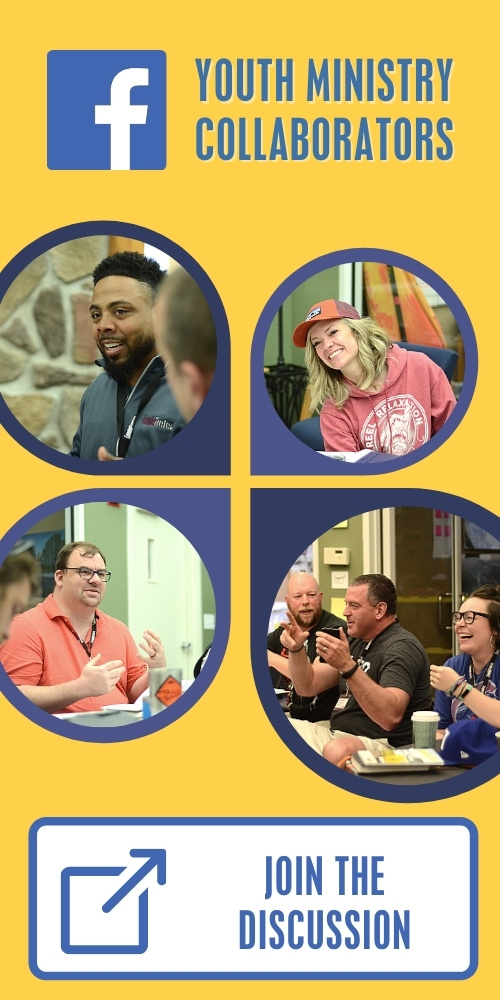Sacred Cow Slaughter: Cutting out Irrelevant Practices
My favorite day of leading youth ministry was the day we slaughtered the sacred cow.
Before I was Pastor James, I was a greasy, squeaky, struggling-with-acne teenager who played the bass guitar with only one finger. In 1999 our youth band had been given creative license to explore the limits of Christian alternative worship during our Sunday morning youth service. While the adults were still being led by a mustache-wearing (pre-hipster) worship leader who fake-slapped the microphone on two and four, we were pushing the boundaries with songs like “Everyday” from a yet-to-be-discovered Hillsong United. Our Sunday morning youth service rocked! It was better than Sunday school, far better than sitting shackled in slacks next to our parents, and it was the first place that I drove myself the day I turned 16 and got my driver’s license.
Fast forward 10 years, and I found myself serving as the senior high youth pastor at the same church. In those 10 years, the church had grown 10-fold. The same Sunday morning youth service was still in operation. Though Hillsong had released some 15 hit singles by then, the quality of student musicianship and the quality of the service hadn’t changed much. Our best musicians were continually graduating, and “big church” was now recruiting from our talent pool. To my surprise, the main services were getting better—a lot better.
I found myself competing with big church. Several of my students started opting out of our youth service to be with adults in the main service. I couldn’t believe it! I began feeling less like the revolutionary I once thought I was and more like a bad elementary school play director. Even more frustrating was the fact that planning and leading our Sunday youth service required 80 percent of my energy, but it was only resulting in 20 percent of the overall fruit in my ministry. Something was wrong.
For two years we tried to improve things. We invested in some used lighting and sound equipment, I developed my preaching and teaching skills, and my volunteers gave it their all. After all, we thought, Sunday youth programming is what churches do, right? It was in my job description. Parents expected it. And it had been such a great ministry for such a long time. Alas, it was not working.
Then it happened: our church went Old Testament.
Though the youth ministry had a phenomenal run on Sunday mornings, it was clear that something wasn’t working. During a series of important staff meetings and conversations, we began asking ourselves some tough questions: “Why was our youth service so mediocre?” “How do we make it better?” “Should we make it better?” “What would happen if we pulled the plug?” Nothing was left off of the chopping block, not even my position at the church. In our conversations, there was no programmatic cow too sacred to leave off the altar.
Before considering alternatives, we needed to determine what the end goal was. For us it was simple: life transformation. We wanted more students encountering more of God. When we were honest with ourselves, we had to admit that Sunday youth service was no longer reaching that goal.
“Programs exist for students, not the other way around.”
Spring was upon us, and it was the perfect time to unroll our new plan, slowly. We began by taking the summer off from Sunday morning programming. Without announcing what would happen in the fall, we invited students to come and sit together in what would become the well-attended youth section of our main services. Our pastor was fully on board, and he began considering the students in his messages, working extra hard to incorporate youth culture references and providing applications relevant to students.
Students found the worship to be surprisingly good, but what was even more surprising was the response that adults had as they watched students worshiping with such passion. It challenged them in their own faith! Over time, students started inviting families that hadn’t been attending, and those families encountered God together for the first time!
In the fall, we launched a mid-week service and transitioned our small groups from homes to the church. This gave the students their own time together as a community. It allowed our small groups to continue and grow. And it freed us from competition with the main services. All of this would never have happened if we had kept ol’ Bessie tied to her post.
I learned 5 lessons from slaughtering our sacred cow:
1) We have to ask ourselves in our ministries, “Is this working?”
2) The support of our church leadership is essential in making changes.
3) We need to make changes ourselves before we expect others to change.
4) When rolling out a new plan, it is best done in strategic steps and with support.
5) Programs exist for students, not the other way around. Every program is expendable.
What sacred cows might you have in your church?
If these are conversations you would like to have more of, I want to invite you to join us this fall in Orlando for our Refuel Retreat. The topic will be “Facing Your Leadership Challenges.” You will get time to work through these types of ministry challenges, training on how to navigate them, and a ton of support as you prepare to do so. For more information, check out www.refuelretreat.com.
CC Image courtesy Lori Greig on Flickr.



